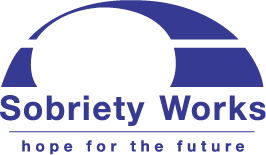Prescription Medication Abuse
Prescription medications such as pain relievers, tranquilizers, stimulants, and sedatives are very useful treatment tools but sometimes people do not take them as directed and may become addicted. Non-medical use of prescription medications like opioids, central nervous system (CNS) depressants, and stimulants can lead to addiction, characterized by compulsive drug seeking and use.
Commonly Abused Prescription Medications
While many prescription medications can be abused or misused, these three classes are most commonly abused:
Opioids: often prescribed to treat pain.
CNS Depressants: used to treat anxiety and sleep disorders.
Stimulants: prescribed to treat narcolepsy and attention deficit/hyperactivity disorder
Opioids
Opioids are commonly prescribed because of their effective analgesic, or pain relieving, properties. Studies have shown that properly man- aged medical use of opioid analgesic compounds is safe and rarely causes addiction. Taken exactly as prescribed, opioids can be used to manage pain effectively
Among the compounds that fall within this class-sometimes referred to as narcotics-are morphine, codeine, and related medications. Morphine is often used before or after surgery to alleviate severe pain. Codeine is used for milder pain. Other examples of opioids that can be prescribed to alleviate pain include oxycodone (OxyContin-an oral, controlled release form of the drug); propoxyphene (Darvon); hydrocodone (Vicodin); hydromorphone (Dilaudid); and meperidine (Demerol which is used less often because of side effects). In addition to their effective pain relieving properties, some of these medications can be used to relieve severe diarrhea (Lomotil, for example, which is diphenoxylate) or severe coughs (codeine).
Opioid medications can affect regions of the brain that mediate what we perceive as pleasure, resulting in the initial euphoria that many opioids produce. They can also produce drowsiness, cause constipation, and, depending upon the amount taken, depress breathing. Taking a large single dose could cause severe respiratory depression or death.
Long-term use also can lead to physical dependence-the body adapts to the presence of the substance and withdrawal symptoms occur if use is reduced abruptly. This can also include tolerance, which means that higher doses of a medication must be taken to obtain the same initial effects. Note that physical dependence is not the same as addiction-physical dependence can occur even with appropriate long-term use of opioid and other medications. Addiction, as noted earlier, is defined as compulsive, often uncontrollable drug use in spite of negative consequences.
Individuals taking prescribed opioid medications should not only be given these medications under appropriate medical supervision, but also should be medically supervised when stopping use in order to reduce or avoid withdrawal symptoms. Symptoms of withdrawal can include restlessness, muscle and bone pain, insomnia, diarrhea, vomiting, cold flashes with goose bumps, and involuntary leg movements.
Individuals who become addicted to prescription medications can be treated. Options for effectively treating addiction to prescription opi- oids are drawn from research on treating heroin addiction. Some pharmacological examples of available treatments follow:
Methadone, a synthetic opioid that blocks the effects of heroin and other opioids, eliminates withdrawal symptoms and relieves craving. It has been used for over 30 years to successfully treat people addicted to opioids.
Buprenorphine, another synthetic opioid, is a recent addition to the arsenal of medications for treating addiction to heroin and other opiates.
Naltrexone is a long-acting opioid blocker often used with highly motivated individuals in treatment programs promoting complete abstinence. Naltrexone is also used to prevent relapse.
Naloxone counteracts the effects of opioids and is used to treat overdoses.
Central Nervous System (CNS) Depressants
CNS depressants slow normal brain function. In higher doses, some CNS depressants can become general anesthetics. Tranquilizers and sedatives are examples of CNS depressants.
CNS depressants can be divided into two groups, based on their chemistry and pharmacology:
Barbiturates, such as mephobarbital (Mebaral) and pentobarbitalsodium (Nembutal), which are used to treat anxiety, tension, and sleep disorders.
Benzodiazepines, such as diazepam (Valium), chlordiazepoxide HCl (Librium), and alprazolam (Xanax), which can be prescribed to treat anxiety, acute stress reactions, and panic attacks. Benzodiazepines that have a more sedating effect, such as estazolam (Pro- Som), can be prescribed for short-term treatment of sleep disorders.
Different classes of CNS depressants work in unique ways. It is their ability to increase GABA activity that produces a drowsy or calming effect. Despite these beneficial effects for people suffering from anxiety or sleep disorders, barbiturates and benzodiazepines can be ad- dictive and should be used only as prescribed.
Discontinuing prolonged use of high doses of CNS depressants can lead to withdrawal. Because they work by slowing the brain’s activity, a potential consequence of abuse is that when one stops taking a CNS depressant, the brain’s activity can rebound to the point that seizures can occur. Someone thinking about ending their use of a CNS depressant, or who has stopped and is suffering withdrawal, should speak with a physician and seek medical treatment.
In addition to medical supervision, counseling in an in-patient or out-patient setting can help people who are overcoming addiction to CNS depressants. For example, cognitive-behavioral therapy has been used successfully to help individuals in treatment for abuse of benzodi- azepines. This type of therapy focuses on modifying a patient’s thinking, expectations, and behaviors while simultaneously increasing their skills for coping with various life stressors.
Often the abuse of CNS depressants occurs in conjunction with the abuse of another substance or drug, such as alcohol or cocaine. In these cases of polydrug abuse, the treatment approach should address the multiple addictions.
Stimulants
Stimulants increase alertness, attention, and energy, which areaccompanied by increases in blood pressure, heart rate, and respiration.
Historically, stimulants were used to treat asthma and other respiratory problems, obesity, neurological disorders, and a variety of other ailments. As their potential for abuse and addiction became apparent, the use of stimulants began to wane. Now, stimulants are prescribed for treating only a few health conditions, including narcolepsy, attention-deficit hyperactivity disorder (ADHD), and depression that has not responded to other treatments. Stimulants may also be used for short-term treatment of obesity and for patients with asthma.
Stimulants increase the levels of certain chemicals in the brain and body. This, in turn, increases blood pressure and heart rate, constricts blood vessels, increases blood glucose, and opens up the pathways of the respiratory system. In addition, the increase in dopamine is associated with a sense of euphoria that can accompany the use of stimulants
Research indicates that people with ADHD do not become addicted to stimulant medications, such as Ritalin, when taken in the form and dosage prescribed. However, when misused, stimulants can be addictive.
The consequences of stimulant abuse can be extremely dangerous. Taking high doses of a stimulant can result in an irregular heartbeat, dangerously high body temperatures, and/or the potential for cardiovascular failure or seizures. Taking high doses of some stimulants re- peatedly over a short period of time can lead to hostility or feelings of paranoia in some individuals.
Treatment of addiction to prescription stimulants, such as methylphenidate and amphetamines, is based on behavioral therapies proven effective for treating cocaine or methamphetamine addiction. At this time, there are no proven medications for the treatment of stimulant addiction. Antidepressants, however, may be used to manage the symptoms of depression that can accompany early abstinence from stimulants.
Depending on the patient’s situation, the first step in treating prescription stimulant addiction may be to slowly decrease the drug’s dose and attempt to treat withdrawal symptoms. This process of detoxification could then be followed with one of many behavioral therapies. Cognitive-behavioral therapies, which teach patients skills to recognize risky situations, avoid drug use, and cope more effectively with problems, are proving beneficial. Recovery support groups may also be effective in conjunction with a behavioral therapy.
Misuse or abuse of opiods (narcotic pain relievers) can:
Produce drowsiness.
Cause constipation.
Depress breathing, depending on the amount taken. Even a large single dose could cause severe respiratory depression and death.
Interact with other drugs and are only safe to use with other drugs when under a physician’s supervision.
(Repeated use can) result in tolerance to the drugs so that higher doses must be taken to get the same initial effects.
Lead to physical dependence after long-term use. This means that the body adapts to the presence of the drug and withdrawal symp- toms occur if use is reduced abruptly.
Produce withdrawal symptoms including restlessness, muscle and bone pain, insomnia, diarrhea, vomiting, cold flashes with goose bumps, and involuntary leg movements.
Misuse or abuse of CNS depressants (used to treat sleeplessness or anxiety) can:
Slow breathing, or slow both the heart and respiration, which can be fatal. This is particularly true if CNS depressants are combined with the use of certain prescription pain medicines, over-the-counter cold (OTC) and allergy medications, or alcohol.
Be highly addictive, which leads to compulsive drug seeking and use.
Lead to withdrawal symptoms after prolonged use, including seizures. When a person stops using CNS depressants after a period of abusing them, the brain’s activity rebounds and can cause this condition.
Misuse or abuse of CNS stimulants (used to treat ADHD and narcolepsy) can:
Result in the development of an irregular heartbeat.
Raise the body’s temperature to dangerously high levels.
Lead to cardiovascular failure or deadly seizures.
Create feelings of hostility or paranoia.
Be particularly dangerous when combined with the use of anti-depressants or OTC cold medicines containing decongestants. An- ti-depressants may enhance the effects of stimulants.
Decongestants, when combined with stimulants, may cause blood pressure to become dangerously high or lead to irregular hearth rhythms.
Sobriety Works has a proven track record in treating prescription medication abuse effectively. If you think you, or someone you care about, may have a problem with prescription medication, we encourage you to contact us. All correspondence is caring, confidential, and respectful. Remember, there is hope for a substance free future.
Sources: NIDA - theantidrug.com

